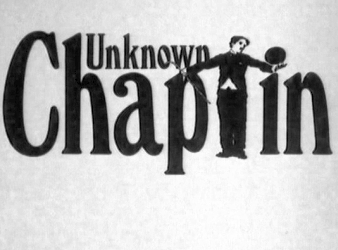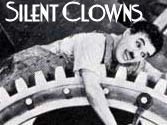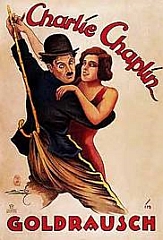UNKNOWN CHAPLIN
(1983)Featuring footage of Charlie Chaplin and many of his players
Written and Directed by Kevin Brownlow and David Gill
Narrated by James Mason
Reviewed by JB
 Kevin Brownlow and David Gill's fascinating and groundbreaking
documentary UNKNOWN CHAPLIN consists almost entirely of outtakes from
Chaplin's films, many that were thought to be lost forever. These
outtakes are the cinematic equivalent of Beethoven's musical
sketchbooks. As we watch the footage of Chaplin at work on the
sets of his classic silent comedies, we are reminded again and
again that genius is truly ten percent inspiration and ninety
percent perspiration.
Kevin Brownlow and David Gill's fascinating and groundbreaking
documentary UNKNOWN CHAPLIN consists almost entirely of outtakes from
Chaplin's films, many that were thought to be lost forever. These
outtakes are the cinematic equivalent of Beethoven's musical
sketchbooks. As we watch the footage of Chaplin at work on the
sets of his classic silent comedies, we are reminded again and
again that genius is truly ten percent inspiration and ninety
percent perspiration.
The first part of the film concentrates on Chaplin's Mutual films, those twelve near-perfect short silent comedies, including The Pawnshop, The Rink and The Floorwalker, that will seemingly live on forever. In this section, we see how Chaplin used his sets as a comic playground, often starting a film with a setting - a department store, a health spa - and little else. He used no scripts, but instead improvised day after day on the set in order to find the right story and the best gags. It's not necessarily surprising to see that many of the perfectly timed chases and gag sequences in these films were the result of many, many takes and many, many abandoned ideas, but it is still fascinating to watch. It's stunning to see how slow and awkward some of the early takes of classic scenes are, as Chaplin and his crew choreographed the action on the fly. We are also treated to Chaplin sometimes laughing at his own mishaps, or, when in a more sour mood, showing flashes of anger when things go wrong.
Parts Two and Three concentrate on Chaplin's
feature films and abandoned films and sequences, respectively.
Both are equally fascinating to watch, especially scenes in which
Charlie directs scenes from his classic CITY LIGHTS,
trying to work out how exactly a blind girl would mistake The Little
Tramp for a rich man (the sequence took 342 takes before Chaplin
finally solved his problem!). There are also two extended
outtakes from the same film, comic sequences that Chaplin filmed and
then cut from the film. Both scenes - The Tramp admiring
a nude statue in a store window, and trying to dislodge a
small piece of wood from a grate in the sidewalk - are amusing but, in
retrospect, would have slowed down the action of what became, in the
end, a near-perfect gem of a movie. That Chaplin cut these
sequences after so much work devoted to them shows how on target
he was about editing his own films. That they exist today
for us to enjoy is one of the best things about this documentary. A
must-see for any fan of Chaplin, silent comedy or movie history.  - JB
- JB


